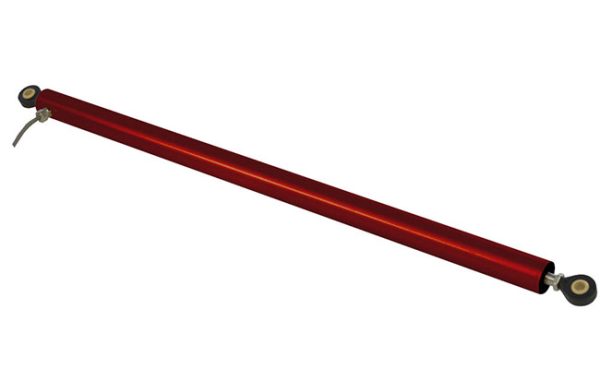Improving Fluid Filtration with IoT
By Emily Newton, Editor-in-Chief, Revolutionized.
Efficient hydraulic filtration is essential to well-functioning systems and machinery. Contaminants can enter during maintenance or because of failed seals. However, hydraulic filters help remove them quickly, preventing more extensive problems.
Many fluid power professionals are particularly interested in how the Internet of Things could improve filter usage and help avoid issues that cause equipment downtime. Although connected filters are not widespread within the industry, they’re becoming more popular. These components can bring several benefits.
Providing reliable data
Monitoring the efficiency of a fluid power system once meant extensive calculations and data entry onto spreadsheets. But smart sensors can significantly improve their processes, and the information they collect is a great advantage.
Users can access up-to-date data about hydraulic pumps that run at progressively lower efficiency. The data helps users know which steps to take for proactive troubleshooting. That might mean changing or cleaning filters as a starting point.
When users lack immediate access to operational data often spend more time diagnosing problems than fixing them. Smart fluid filters and connected IoT components provide that information, often shortening the time needed to address any issues.
One company with IoT filtration options uses the associated data to find connections between filter life spans and specific operating conditions, providing more information than the user manuals.
A recent McKinsey & Co. study profiled the ongoing rise in popularity of smart hydraulic pumps. Purchasers appreciate how those components make it easier to gauge performance, detect problems, and schedule maintenance. Smart fluid filtration options allow users to capitalize on connected industrial systems even more.
Smart filters can make users more confident about critical decisions under pressure, when they must weigh competing factors. Immediate access to relevant data can reduce anxiety about taking targeted action.
Better maintenance strategies
Obtaining expected results from hydraulic filtration efforts requires proper upkeep. The manufacturer’s documentation tells users how often to clean or change a filter. Those steps are vital. Cleaning the filter is among the most critical steps for maintenance because clogs could damage the system or cause excessive wear. Debris gradually builds up over time due to normal usage.
An IoT filter enables precision about when and why changes happen. One practical and popular strategy is following a manufacturer’s directions for filter changes. But smart filters tell users when a filter reaches peak efficiency. Users no longer risk changing filters too soon or too late. Statistics indicate companies can save at least 33% by deploying this systemwide filtration strategy.
Smart sensors on filters and other components also support faster and more comprehensive maintenance checks. One solution for hydraulic systems in mining operations involves linking every part to a QR code. Users scan it to find data such as asset inventories, specifications, and maintenance histories.
The codes can also generate system risk scores that go directly to maintenance technicians overseeing a hydraulic system. If the information indicates a hydraulic filtration problem or some other concern, maintenance crews have the necessary details to troubleshoot in purposeful ways.
Engaging newer technologies
Using hydraulic systems is all about continuous improvement. It means targeting weaknesses, finding their sources, and making the equipment more resilient and less prone to failure. IoT can be a significant aspect in helping people meet those goals. Statistics suggest IoT’s market worth will surpass $2.4 trillion by 2029. Various industries use the technology, but some decision-makers need encouragement. It could come through solving a common hydraulic filtration pain point.
Anyone who works with this type of equipment understands the need to keep the filters clean, change them at regular intervals, and engage in regular contaminant monitoring. But not everyone is familiar with IoT’s benefits to hydraulic systems. Those hesitant about it are sometimes more open to it once they realize how the technology helps address well-defined needs.
The solution does not require hardwiring or an additional cellular device. Users can reportedly install it in minutes. Quick installation reduces users’ fears about IoT as a time sink rather than something intended to help.
Another user-friendly example is a plug-and-play product for real-time IoT condition monitoring. Hydraulic fluid contamination is the top cause of system downtime. But a plug-and-play kit gives users everything they need to get started without hassles.
Options like these make some users excited about using IoT and show that the technology is within reach.
Highly functional hydraulic filtration is key to ensuring systems perform as expected without costly breakdowns or other issues. IoT makes it easier to oversee granular aspects, such as when to change a filter. Connected solutions also improve contaminant monitoring, improving visibility and preventing frustrating problems that derail operations.
Users not accustomed to IoT may require an adjustment period. But more often than not, they find the change worth the effort because it ultimately saves time and money. One practical way to ease into things is to put a smart filter on a single hydraulic system first, then scale up from there once the advantages become apparent.
Emily Newton is Editor-in-Chief of Revolutionized, an online magazine covering technologies advancing the industrial sector.







